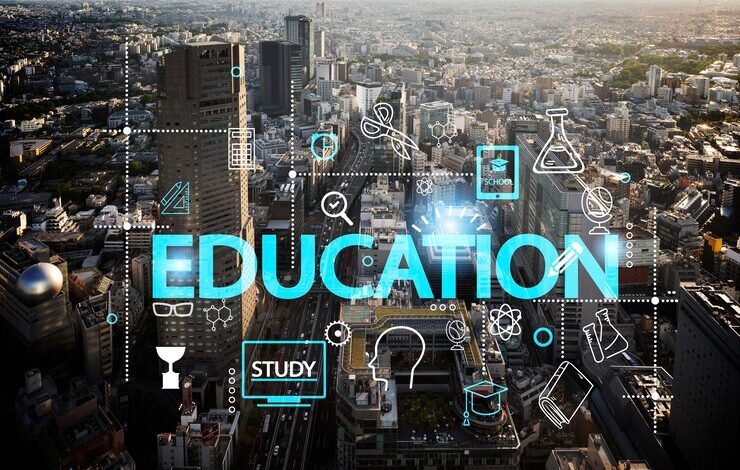Learning Reimagined: How Technology is Empowering the Next Generation

Key Takeaways
- The integration of technology in education is enhancing learning experiences and accessibility.
- Digital tools and platforms transform traditional teaching methods into more interactive and engaging formats.
- Artificial intelligence is becoming more and more important in individualized education and evaluation.
- Collaborative learning and global connectivity are breaking down geographical barriers in education.
- The ever-changing requirements of educators and students require constant innovation in educational technology.
Technology reshapes education by enhancing accessibility, personalizing learning experiences, and integrating digital tools into classrooms. These advancements prepare students with essential skills for the future and foster innovation and collaboration in the learning process.
The Role of Technology in Modern Classrooms
The infusion of technology into classrooms has dramatically transformed the educational landscape. From interactive whiteboards to sophisticated learning management systems, the traditional blackboard has made way for tools that facilitate a more engaging and interactive learning environment. Classrooms now use tablets, projectors, and smartboards that help visualize complex concepts, thus making learning more inclusive and interactive. According to recent research on technology in education, schools that incorporate these advancements report higher student engagement and improved learning outcomes. Teachers can also utilize these tools to diversify their teaching methods, appealing to a broader range of learning styles.
Furthermore, leveraging comprehensive education IT solutions has become crucial in maintaining this technological ecosystem. These solutions ensure that all equipment is functional, software is up-to-date, and data is secure. This support enables educators to focus on delivering lessons without being hampered by technical difficulties, thus enhancing the overall learning experience for students.
Digital Tools Enhancing Learning Experiences
Among the myriad digital tools available, educational apps play a pivotal role. These apps cater to various learning styles, ensuring that visual, auditory, and kinesthetic learners can access materials that suit their needs. For example, interactive learning platforms like Khan Academy offer a range of subjects through videos, quizzes, and practice exercises, aiding in the retention and practical application of knowledge. Additionally, educational lifestyle changes, spurred by EdTech advancements, have led to integrating virtual reality (VR) and augmented reality (AR) in classrooms. These technologies provide immersive learning experiences, enabling students to explore historical events, scientific phenomena, and complex mathematical problems visually compellingly.
Another significant benefit of these tools is the ability to track student progress in real time. Teachers can receive immediate feedback on student performance, allowing them to adjust lesson plans and provide additional support. This targeted approach ensures that all students can achieve their academic goals regardless of their learning pace.
Artificial Intelligence in Personalized Learning
Artificial Intelligence (AI) is revolutionizing personalized learning by tailoring educational content to individual student needs. AI-driven platforms collect and analyze student performance data, creating customized learning plans that highlight strengths and address weaknesses. These platforms can adapt in real time, offering alternative explanations, practice problems, and supplementary resources that cater to the student’s learning style. This approach ensures students are included, making education more inclusive and effective.
Moreover, artificial intelligence can streamline operational responsibilities like grading and attendance, allowing educators to prioritize teaching. This enhances effectiveness and enables a more customized and interactive learning journey. AI enables educators to quickly recognize and tackle learning disparities, offering prompt interventions to improve student achievement.
Collaborative Learning and Global Connectivity
Technology has made it possible for students to collaborate beyond the boundaries of their classrooms. Tools such as Google Classroom and Zoom facilitate real-time collaboration and communication among students from different parts of the world. These platforms enable projects, discussions, and peer reviews to occur in virtual spaces, enhancing the learning experience through diverse interaction. Because of its worldwide reach, education is enhanced by exposing pupils to various viewpoints, concepts, and cultural practices—a valuable skill in today’s more interconnected world.
Students can, for example, collaborate on projects with peers from other nations, which helps them to learn and appreciate various social norms and cultural customs. This fosters not only academic growth but also social skills that are essential in a globalized workforce. Moreover, these collaborative tools help bridge the gap between theoretical learning and real-world application, preparing students for future careers emphasizing teamwork and cross-cultural collaboration.
Ensuring Digital Equity
While educational technology has immense benefits, ensuring digital equity remains a significant challenge. Addressing the digital divide is crucial so that all students, regardless of socioeconomic background, can access the necessary tools and resources. The disparity in technology access can hinder the potential of students from underserved communities, widening the educational gap.
Partnerships between educational institutions, governments, and technology companies are essential in providing these communities with affordable technology solutions and high-speed internet. Initiatives such as providing low-cost devices, subsidizing internet costs, and establishing community tech centers can make a significant difference. To level the playing field and enable every student to thrive in a technologically advanced environment, it is essential to guarantee that all students have equitable access to digital resources.
Teacher Training and Professional Development
Successful technology integration in education also depends on teachers’ ability to use digital tools effectively. Continuous professional development and training programs are necessary to equip educators with the latest skills and knowledge. Teachers must be comfortable and proficient with new technologies to utilize their classroom potential fully.
Institutions should invest in ongoing training sessions focusing on practical technology applications in teaching. Workshops, online courses, and peer mentoring programs can provide the support educators need to stay current with technology trends. Additionally, encouraging teachers to be innovative and to learn continuously will motivate them to adopt new technology, ultimately improving student outcomes.
The Future of Educational Technology
Educational technology is increasing, and constant innovation is necessary to meet the ever-changing demands of educators and students. Emerging technologies like blockchain for secure record-keeping, gamification for enhanced engagement, and advanced analytics for data-driven decisions are set to shape the future of education. Blockchain, for instance, can ensure secure and immutable academic records, reducing fraud and enhancing the credibility of certifications.
Remaining up-to-date on these trends and investing in state-of-the-art tools will guarantee that educational institutions stay ahead in providing top-notch education. Innovations such as AI tutors, adaptive learning platforms, and virtual labs will continue transforming how education is delivered and received. By embracing these technologies, educators can provide a more personalized, engaging, and efficient learning experience, preparing students for a dynamic and technology-driven future.
To sum up, technology is a potent catalyst that is changing education. By embracing digital tools, fostering global collaboration, and ensuring digital equity, we can create a more inclusive, engaging, and effective learning environment for the next generation. With the progress of educational technology, there is a possibility for a total revolution in how we educate and support our students, equipping them with the necessary knowledge and skills for success in the modern era.



